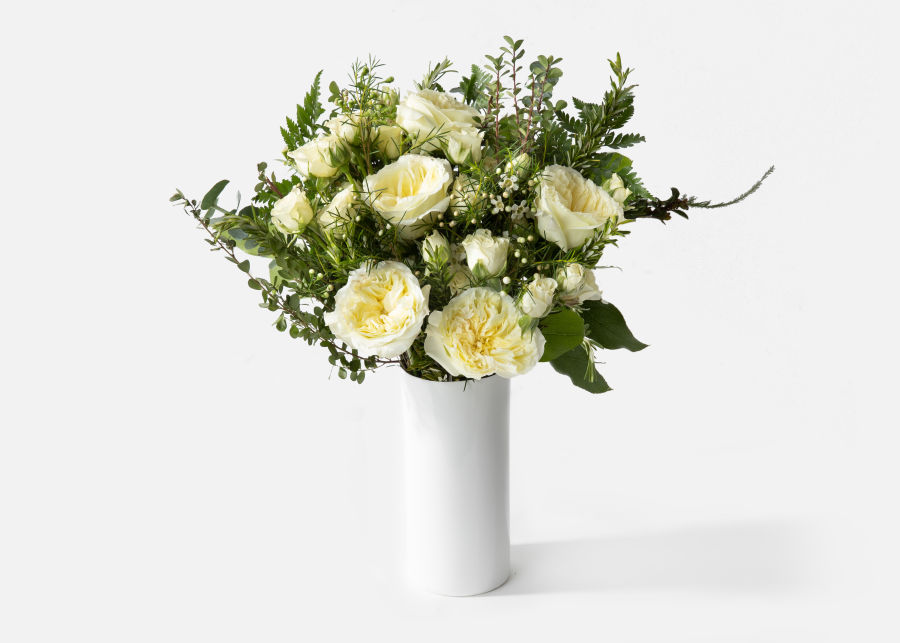The Optimist Vase Included » Send Flower Bouquets | UrbanStems Flower Delivery
Bouquet with rosemary, waxflower fern, spiral eucalyptus, and garden roses in a speckled white ceramic vase.
1) Find a Vase – You may have noticed your flowers no longer have roots, and that they’re not in soil. Bet they’re thirsty! Time to put them in your favorite vase with some fresh water.
2) Trim Those Stems – Keep those stems trimmed! Always cut your flowers at an angle so they can absorb more water & won’t suffocate on the bottom of the vase. After the initial cut, check the bottoms of your stems every couple of days, and if the ends are looking a bit slimy, just snip off an inch or so.
3) Remove Leaves – Take off any excess leaves so that all the water is funneled into the petals. Pay special attention to leaves below the water line because they’ll decompose, causing rot and bacteria to grow, which will shorten the lifespan of your blooms.
4) Mist Them – Flowers like to be misted (let’s be honest, who doesn’t?). Lightly spray down the petals from time to time to keep your stems looking fresh, and remove any buds that are clearly past their prime.
5) Keep Them Cool – Last but not least, keep your flowers in a cool area. Don’t put them near radiators, computers, televisions, fireplaces, ovens… you get the idea.
Additional information
| WHAT'S INCLUDED | Rosemary, Spiral Eucalyptus, Garden Roses, Boxwood, Wax Flower, Salal Leaves, and Leather Fern in a 4.50" x 4.50" x 9" Speckled White Ceramic Vase |
|---|---|
| PART OF | The Vogue Collection |






Reviews
There are no reviews yet.